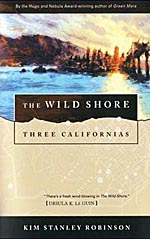
![]() Bormgans
Bormgans
6/1/2020
![]()
Information is key in the novel. Just like the readers, the characters are in the dark about what happened. They are also in the dark about what is happening, for Robinson shows glimpses of a bigger narrative in world politics in the aftermath of the attack - but characters nor readers get to know its true extent. It is a clever narrative device, maximizing the reader's empathy with the characters: we share uncertainty and frustration about it. It is especially clever because - like the readers - the characters do know about what once was: trains, electricity, hospitals, national pride, and general literacy.
Robinson isn't showy, and he doses the post-apocalyptic horror extremely sparsely, at the right times, with supreme command - so much that most of the time you even forget you're reading a post-apocalyptic story at all.
Just as Hank doesn't have a grip on what happens, he doesn't have a grip on what he himself is doing. He doesn't know whether his actions are the right ones, and moral information doesn't come cheap. The obligatory old man in the story - Tom - seems to have a better grip on things. He's the only character that survived from the olden days, but ultimately confesses to be a fool too, like anyone. Robinson leaves it to the reader: how much in control are we really, and how is history formed?
https://schicksalgemeinschaft.wordpress.com/2020/06/01/the-wild-shore-kim-stanley-robinson-1984/